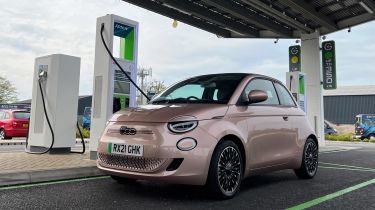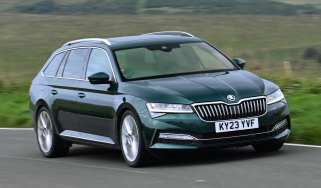EV charger numbers are growing rapidly but there's one small problem
The number of public EV chargers across the UK grew by 38 per cent in 2024, but analysts are concerned about what’s being installed and regional inequality

The number of public charge points for electric cars rose by almost 40 per cent in 2024, but analysts believe the increase in availability may still not cater for all – especially at the lower end of the market.
Latest Government figures show that as many as 20,000 new public electric car chargers were installed last year, taking the total number to just shy of 74,000 devices.
There appeared to be a particular focus on those of the ultra-rapid-charging variety – units that can deliver electricity at speeds of over 150kW – with more than 3,000 installed. This constituted a significant jump of 83 per cent.
However, some experts believe that focus is potentially misplaced. Professor Peter Wells of the Centre for Automotive Industry Research at Cardiff University told Auto Express: “So far, charge point installations are rather biased towards specific use patterns, and excluding others.”
Wells explained: “We have a growing number of domestic charge points which suit those with the space and funding to install them, high-powered units that suit large EVs travelling longer distances and so-called ‘destination chargers’ that suit people using their EV to reach a point at which they may stay for some time, typically, for example, restaurants.
“This is all well and good, but for those many people who do not have the opportunity for a domestic charge point, and who want to use a small and efficient EV for daily runarounds, provision is woeful – both in terms of the infrastructure and in terms of the cars available on the market.”
Late in 2024, the National Audit Office stated that the Government is on track to hit its target of 300,000 public chargers by 2030 – an estimate Wells described as incorporating “rather a lot of assumptions”.
While the number of on-street charging locations – which typically use lower-powered and cheaper-to-use chargers – has grown by roughly 72 per cent, the vast majority of these have sprung up across cities such as London, Liverpool and Coventry, further broadening the regional inequality gap.
In early 2023, the previous Government launched the Local Electric Vehicle Infrastructure (LEVI) Capability Fund, which is designed to provide sufficient EV charging facilities at a community level. Although Wells considers this scheme “a key need”, he said that “a patchwork of provision is likely to emerge with the poorest locations least able to fund this type of solution”.
Vicky Read, the CEO of trade body ChargeUK, told Auto Express that several obstacles are already preventing the rollout of LEVI infrastructure. “Grid connections, streetworks licensing and planning permission processes are currently slow and vary significantly across the UK, with these needing to be sped up and standardised,” Read said.
“This fund now urgently needs to lead to public tenders, so the sector can install the chargers needed and ensure nowhere is left behind in the EV transition.”
However, the availability of chargers is not the only issue facing EV drivers. The RAC’s senior policy officer, Rod Dennis, described the rise in the number of public chargers as “positive”, but added: “There is still a huge gulf in prices between public and home chargers, partly due to the higher rate of VAT (20 per cent) at public charge points compared to the five per cent domestic rate. It’s important that their affordability is addressed.”
Fancy a zero-emission bargain? These are the cheapest electric cars on sale...








